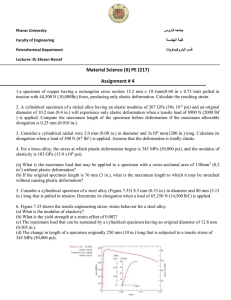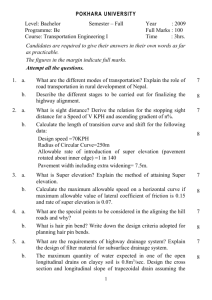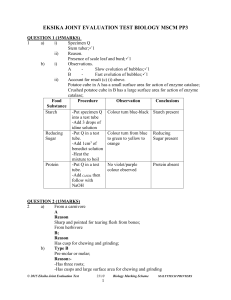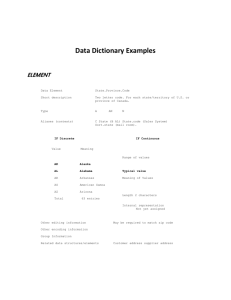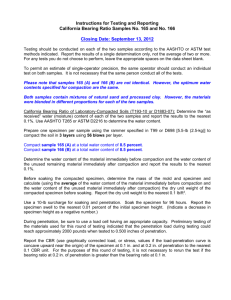specimen geometry and aggregate size effects in uniaxial
advertisement
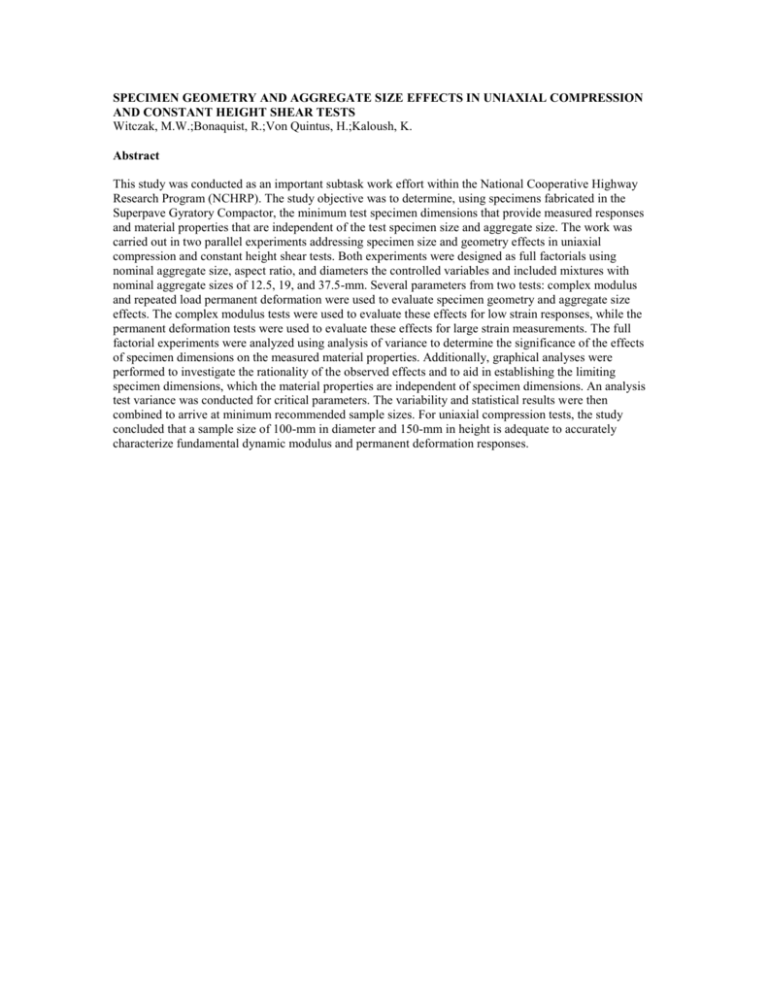
SPECIMEN GEOMETRY AND AGGREGATE SIZE EFFECTS IN UNIAXIAL COMPRESSION AND CONSTANT HEIGHT SHEAR TESTS Witczak, M.W.;Bonaquist, R.;Von Quintus, H.;Kaloush, K. Abstract This study was conducted as an important subtask work effort within the National Cooperative Highway Research Program (NCHRP). The study objective was to determine, using specimens fabricated in the Superpave Gyratory Compactor, the minimum test specimen dimensions that provide measured responses and material properties that are independent of the test specimen size and aggregate size. The work was carried out in two parallel experiments addressing specimen size and geometry effects in uniaxial compression and constant height shear tests. Both experiments were designed as full factorials using nominal aggregate size, aspect ratio, and diameters the controlled variables and included mixtures with nominal aggregate sizes of 12.5, 19, and 37.5-mm. Several parameters from two tests: complex modulus and repeated load permanent deformation were used to evaluate specimen geometry and aggregate size effects. The complex modulus tests were used to evaluate these effects for low strain responses, while the permanent deformation tests were used to evaluate these effects for large strain measurements. The full factorial experiments were analyzed using analysis of variance to determine the significance of the effects of specimen dimensions on the measured material properties. Additionally, graphical analyses were performed to investigate the rationality of the observed effects and to aid in establishing the limiting specimen dimensions, which the material properties are independent of specimen dimensions. An analysis test variance was conducted for critical parameters. The variability and statistical results were then combined to arrive at minimum recommended sample sizes. For uniaxial compression tests, the study concluded that a sample size of 100-mm in diameter and 150-mm in height is adequate to accurately characterize fundamental dynamic modulus and permanent deformation responses.


